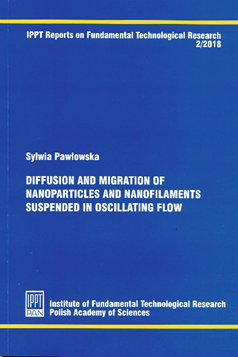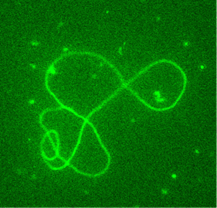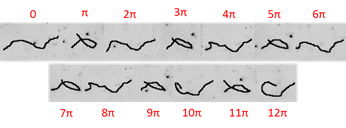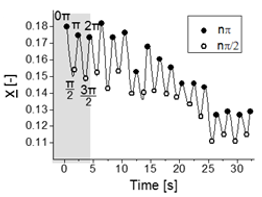
We are pleased to announce a monograph "Diffusion and migration of nano particles and filaments suspended in oscillating flow", Sylwia Pawłowska (IPPT Reports 2/2018).
Diffusion and migration of nano particles and filaments suspended in oscillating flow
The subject of this work is an experimental analysis of the dynamics of nanoobjects suspended in a liquid. The research will make it possible to appreciate the role played by hydrodynamic and ionic interactions on the transport properties of Brownian solid spherical objects, as well as strongly deformable nanofilaments and macromolecules.
 |
In the first stage of the work, an analysis of the Brownian fluctuations of spherical nanoparticles suspended in electrolytes was conducted. This thesis presents the results of the research carried out on the influence of the medium ionic strength and the wall on the size of the apparent (hydrodynamic) diameter of these spherical nanoobjects. As the particle size decreased, some significant discrepancies were found between the tabulated data and the measured hydrodynamic diameter of the particle. The hydrodynamic diameter of nanoparticles or biological macromolecules in a given environment must be known in order to determine their diffusion in the environment studied (e.g. the environment of the cell interior, body fluids). The second stage of the research concerns the mobility of deformable nanoobjects with a structure similar to long macromolecules. These are nanofilaments made of a hydrogel material. The original coaxial electrospinning technique was developed to produce them. This technique allows for the fabrication of core-shell fibres, with a highly elastic hydrogel filamentous core. This hydrogel core is a mixture of two components: acrylamide (AAm) or N, N-isopropylacrylamide (NIPAAm), and a N, N'-methylene bisacrylamide cross-linking agent (BIS-AAm). |
 |
Long and highly deformable hydrogel nanofilament suspended in liquid.
The mechanical properties of nanofilaments are evaluated by analysing their Brownian characteristics. The aim of this research is to determine the value of the persistent length of the object analysed, which is correlated with its bending Young's module. After assessing their full morphological characteristics and mechanical properties, the behaviour of hydrogel nanofilaments in the flow was analysed. An experimental system based on microfluidic systems, was used to analyse the dynamics of filament deformation and the migration of nanofilaments in the oscillating flow, simulating intercellular and inter-tissue flows in living organisms. The investigated phenomenon of lateral migration is important for the description of the transport properties of deformable macromolecules in capillaries.
 |
 |
| Characteristic bent-like configurations of long hydrogel nanofilaments at different time points over the course of an experiment. | Trajectories of the centre-of-mass position of nanofilaments in the function of time. |
The basic goal of the analysis of the dynamics of nanofilaments is the possibility to use them as models of elongated biological particles, such as proteins and DNA. The analysis of their movement and deformation in the flow will support the verification of existing theoretical models, and will expand our understanding of the physical phenomena which are responsible for the folding dynamics of long biomolecules. Another very important aim of this work is to offer the possibility of using such highly deformable, biocompatible objects in biomedical applications. Such objects can be used as nanotransporters of substances with therapeutic effects, which – in a controlled and dedicated manner – release the drug to the site affected by the disease. A comprehensive understanding of the dynamics of individual objects is crucial to their eventual further applications.









